Roni Horn talks remote control in her upstate New York retreat
Geordie Wood - Photography
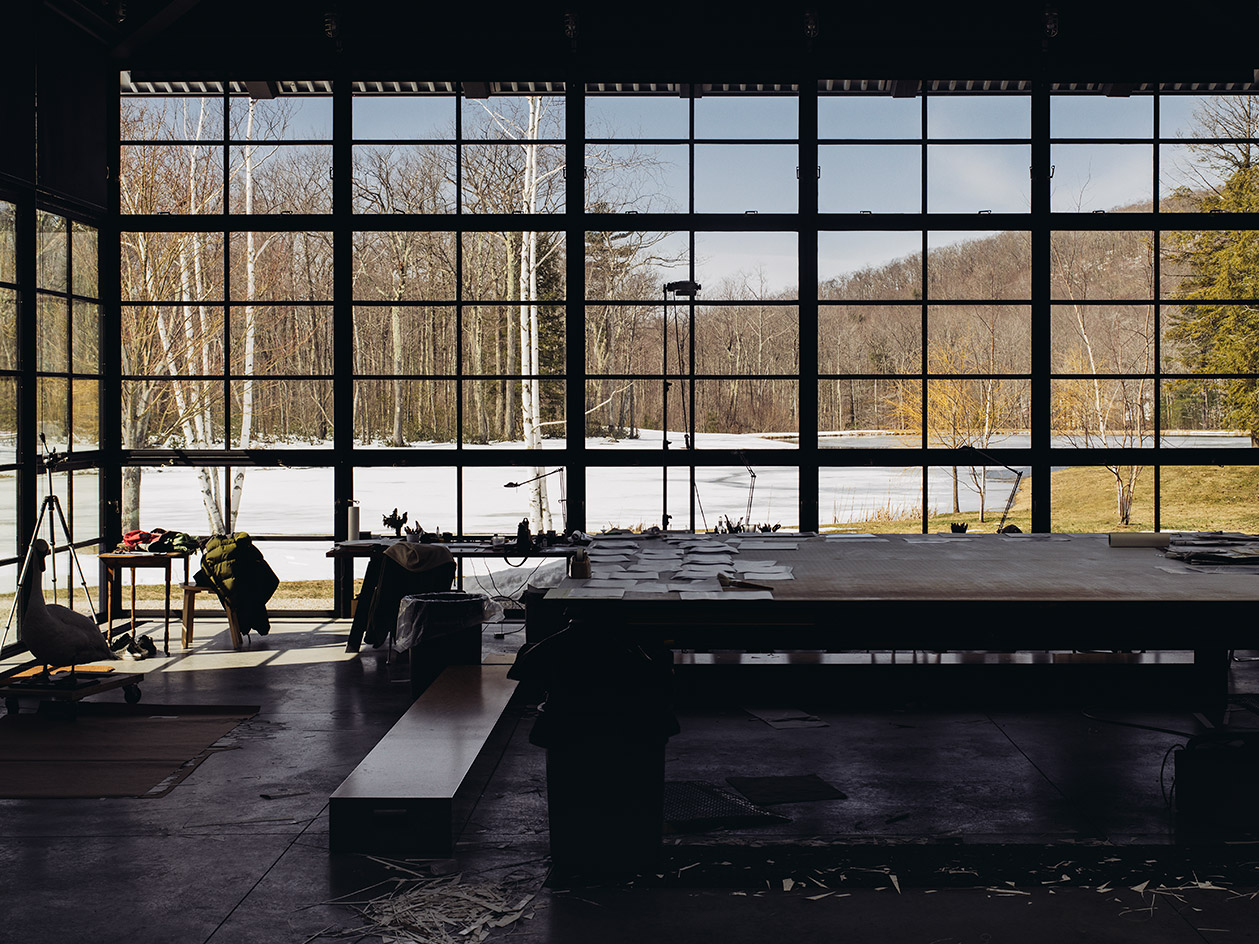
To get to Roni Horn’s home and studio in upstate New York, you drive through farm villages, past horses grazing on meadows, and after a few turns, reach a gate leading to a rugged dirt road. Even on a balmy spring day, the road is covered in a layer of ice. It’s a long, winding ascent until you reach another turn, passing by two seal-brown buildings, before finally reaching a house overlooking a small lake, with floor-to-ceiling windows and deeply set eaves on each end. The sun pours through the building, bathing the space in a cool light on this slightly overcast day.
Horn and a friend purchased the 100-acre piece of land in 2005. ‘We got it so we would have real privacy,’ says Horn. This urge for isolation is no surprise from an artist who in 1982 chose to live solo in a lighthouse in Iceland for two months. Horn does, though, still maintain her 6,000 sq ft Manhattan studio, which houses her most precious personal possession: her collection of books. She grew up in and around New York City and hasn’t given up on it entirely.
Horn designed the country studio herself, primarily as a space to create drawings and photographic works (her large-scale sculptural works are produced by outside fabricators). And like her work, the studio is shaped by the environment in which it was created. Horn says that its mountainside location leads to violent winters, with heavy wind, deep snow, and impenetrable ice. ‘The structure takes an incredible amount of abuse,’ she says, something she had to consider in its design. ‘We get a lot of wind and snow, and these wide eaves really protect me and the building as well.’
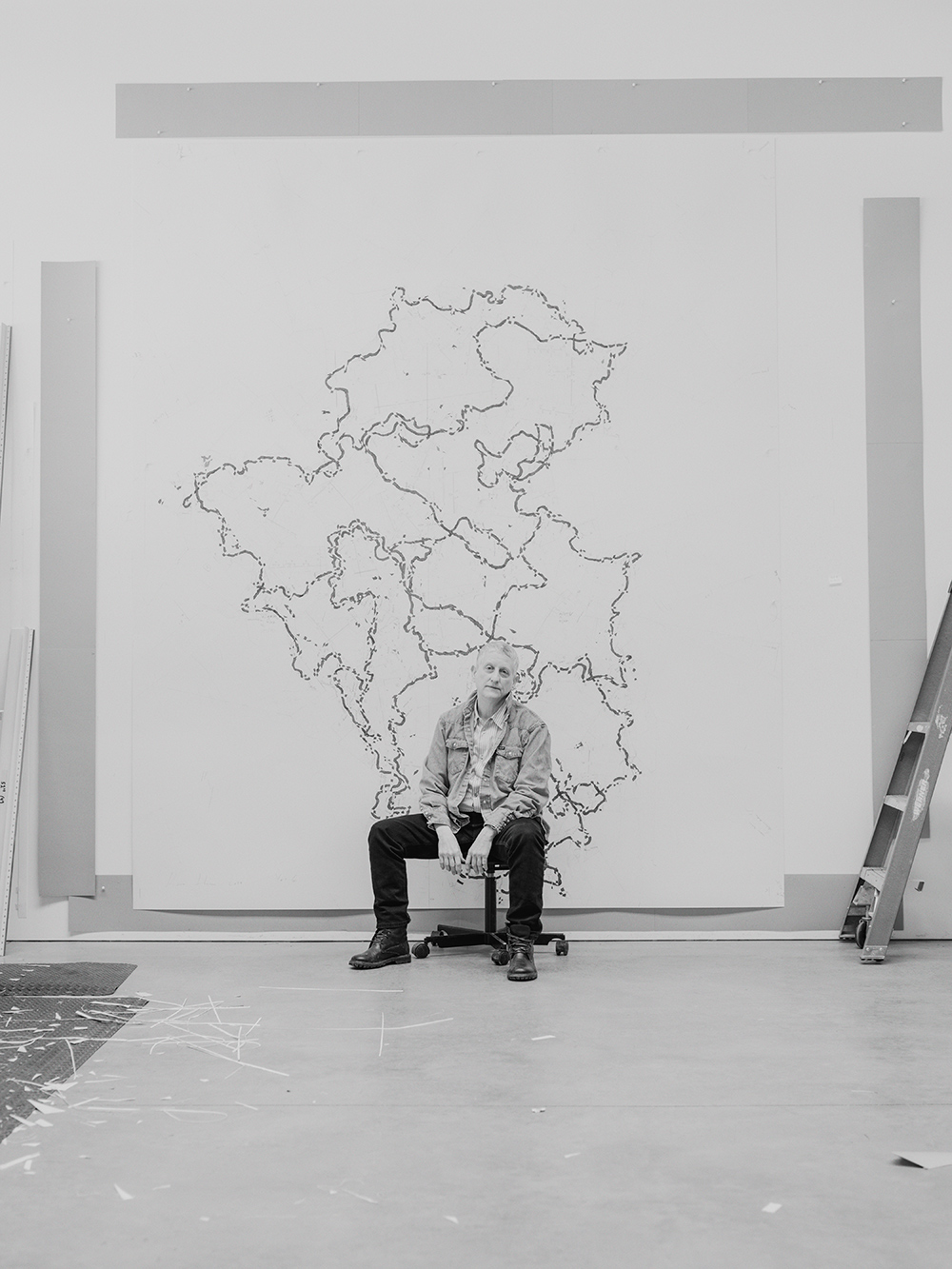
A portrait of the American artist at her studio in Austerlitz, NY.
The airy ceilings and polished concrete floors emphasise the industrial feel of the space, though it mostly recedes into the environment. On one side, a shelving unit is lined with bright pigments from Germany, Iran, and even Iceland – strikingly beautiful, but also strikingly toxic, Horn tells me. ‘The pigments are all heavy metals. Beauty and toxicity are very simple and strange; there is a correlation that I haven’t figured out.’ (That tension between violence and serenity, or brutality and beauty, is a continuous theme in Horn’s work.) The studio also houses tools such as epicly sized straight-edges and rulers; a long drawing table facing the lakeside wall of windows, piled with books, paper, and pencils; and a sound system to listen to music (Horn mentions Kanye West, George Gershwin, Cole Porter and Kurt Weill) and podcasts while working.
But most striking are a series of drawings hanging from the walls, still in the process of completion. It’s this suite of drawings that will be premiered at Horn’s show at Hauser & Wirth in Zurich this summer. Horn’s practice has fluctuated within the confines of ‘conceptualism’ or ‘minimalism’ – though the artist scoffs at the notion of being considered minimalist, or pigeonholed in any other way. However, material and its potency, and sometimes duplicity, have been central to her work. Whether working in aluminium, glass or photography, she’s explored media until she feels she has completed or exhausted them.
Drawing, however, offers the artist something different – an eternal and incremental journey. Horn has often compared drawing to breathing, a necessary function that keeps her practice moving and evolving between bigger and often riskier works. ‘It’s something I need to do to keep peace with myself, so that I can take the kind of risks I feel are necessary for me,’ says Horn. ‘The sculpture and the photo installations are very high-risk conceptually and also technically, so drawing in a way gives me the strength to extend myself out into the wilds [of my practice].’
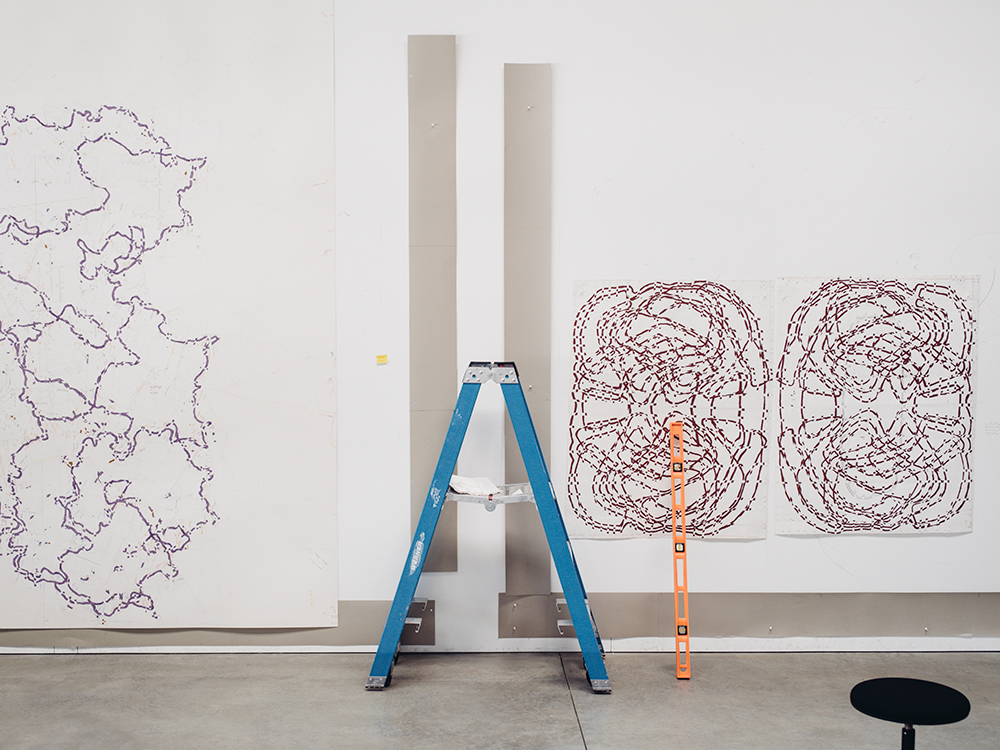
Some of Horn’s works in progress in her studio.
Horn began working on her ‘pigment drawings’, made from powdered pigment, turpentine and varnish applied to paper, in the 1980s. Often on the small scale, early works were conceived as near identical pairs or trios of deeply pigmented abstract shapes; eventually colour receded to make way for cut and reassembled pieces of paper that blossom into architecture-like creations. In her most recent iteration, Horn has cut and arranged shards of paper, or ‘plates’, into large-scale works that, as a viewer, you’re lost inside. Look closely and you find fragments of language, numbers and symbols throughout the works. ‘It’s like a record, like a tracing of time. The drawings actually function on that level in addition to whatever graphic I start out with,’ explains Horn. ‘At some point, the process comes to an end and it’s a very intuitive ending. It’s very, very undramatic – more an athletic process, actually.’ The intensity of the process comes through in the shards of paper strewn around the base of a custom-made table on which she makes these drawings.
Alongside the new series of pigment drawings, Horn will premiere a wall-covering installation, entitled Wits’ End Sampler, born from a project she has been working on for years, asking friends and strangers to write out idioms or clichés. She collected over a thousand handwritten phrases, such as ‘When pigs fly’ or ‘Dumb as bricks’. The unedited contributions, complete with misspellings and malapropisms, will be screenprinted and applied to the walls of Hauser & Wirth’s second-floor galleries.
As we talk, Horn points out a charm of yellow finches near the window. We look for a moment as a quietness coats the room, and I recall a common experience I’ve had with her work – that of a pure moment of stillness, a stillness increasingly hard to find. This is what the artist has made an effort to create around her. ‘When I’ve had the choice [in my life] to make, it was always toward the solitary – being out in the wild with complete psychological freedom,’ says Horn. And looking out into the vast forest around her and the tranquil lake, it’s clear that she’s found that.
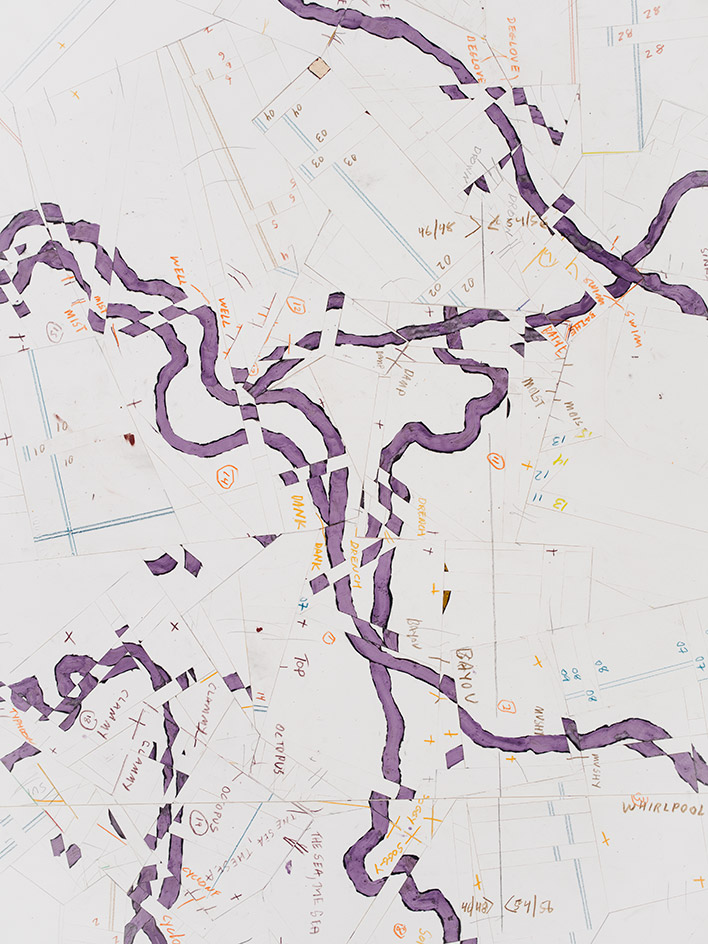
In progress, a pigment drawing featuring fragments of language, numbers and symbols.
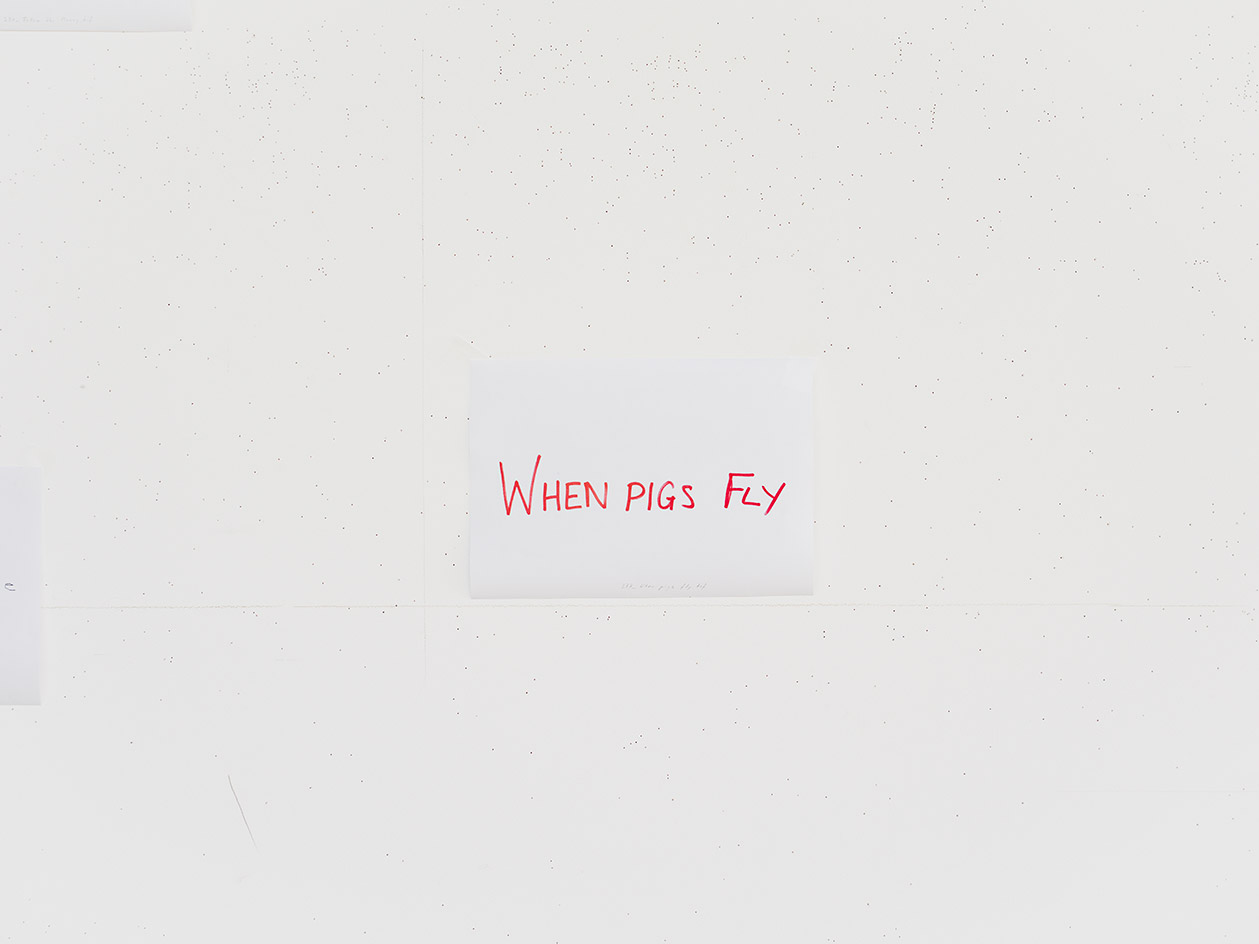
One of the thousands of idioms collected by Horn for her new piece, Wits’ End Sampler.

Detail of Wits’ End Sampler, 2010/2018, handwritten idioms silkscreened on wall.
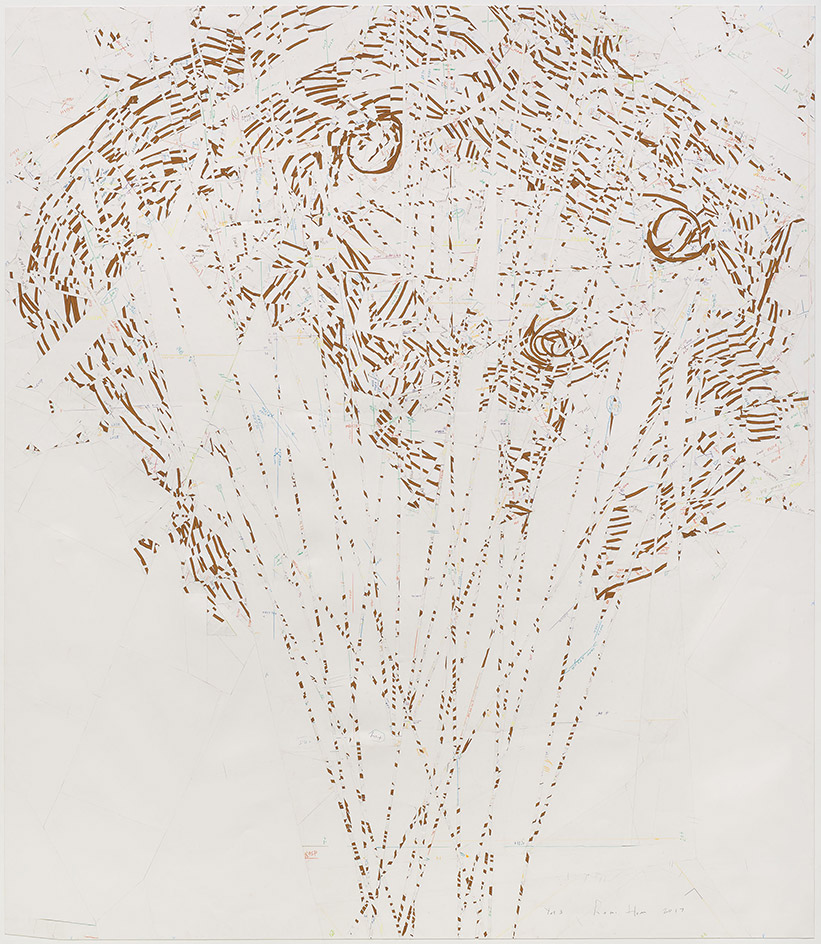
Yet 3, 2013/2017, powdered pigment, graphite, charcoal, coloured pencil and varnish on paper.
INFORMATION
‘Roni Horn: Wits’ End Sampler | Recent Drawings’ is on view from 10 June – 1 September. For more information, visit the Hauser & Wirth website
Receive our daily digest of inspiration, escapism and design stories from around the world direct to your inbox.
ADDRESS
Hauser & Wirth
Limmatstrasse 270
8005 Zurich